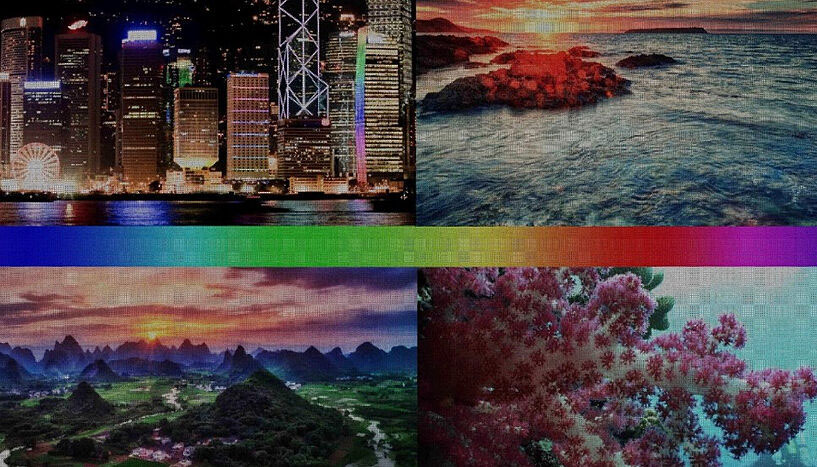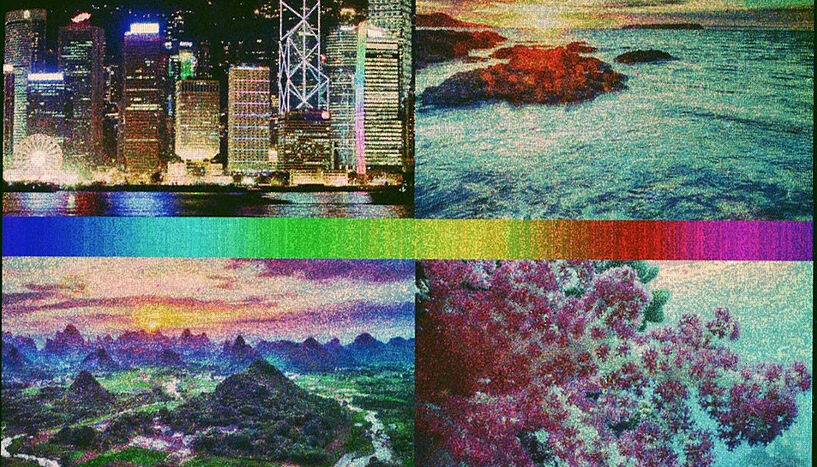| Oct 17, 2023 |
Art with DNA - digitally creating 16 million colors by chemistry
(Nanowerk News) The DNA double helix is composed of two DNA molecules whose sequences are complementary to each other. The stability of the duplex can be fine-tuned in the lab by controlling the amount and location of imperfect complementary sequences. Fluorescent markers bound to one of the matching DNA strands make the duplex visible, and fluorescence intensity increases with increasing duplex stability.
|
|
Now, researchers at the University of Vienna succeeded in creating fluorescent duplexes that can generate any of 16 million colors – a work that surpasses the previous 256 colors limitation. This very large palette can be used to "paint" with DNA and to accurately reproduce any digital image on a miniature 2D surface with 24-bit color depth.
|
Key Takeaways
|
|
By manipulating the stability of the DNA duplex, they achieved a gradient of color shades, mirroring the intricacies of modern digital images.
Over 45,000 unique DNA sequences were synthesized using a method called maskless array synthesis (MAS) on a surface the size of a fingernail.
This technology allows for the transformation of any digital image into a DNA replica with precise color accuracy.
The potential applications extend beyond imaging to include advanced DNA data storage, signifying the growing significance of color chemistry in scientific advancements.
|
The Research
|
|
This research was published in the Journal of the American Chemical Society ("A Canvas of Spatially Arranged DNA Strands that Can Produce 24-bit Color Depth").
|
|
The unique ability of complementary DNA sequences to recognize and assemble as duplexes is the biochemical mechanism for how genes are read and copied. The rules of duplex formation (also called hybridization) are simple and invariable, making them predictable and programmable too. Programming DNA hybridization allows for synthetic genes to be assembled and large-scale nanostructures to be built.
|
|
This process always relies on perfect sequence complementarity. Programming instability vastly expands our ability to manipulate molecular structure and has applications in the field of DNA and RNA therapeutics. In this novel study, researchers at the Institute of Inorganic Chemistry at the University of Vienna showed that controlled hybridization can result in the creation of 16 million colors and can accurately reproduce any digital image in DNA format.
|
 |
| Fig. 1: The original digital image (in standard 24-bit color depth). (Image: cblee, Trey Ratcliff, stewartbaird and NOAA Ocean Exploration & Research)
|
 |
| Fig. 2: The picture "photocopied" in DNA format by the authors. (Image: Tadija Kekic and Jory Lietard)
|
A canvas the size of a fingernail
|
|
To create color, different small DNA strands linked to fluorescent molecules (markers) that can emit either red, green or blue color are hybridized to a long complementary DNA strand on the surface. To vary the intensity of each color, the stability of the duplex is lowered by carefully removing bases of the DNA strand at pre-defined positions along the sequence. With lower stability comes a darker shade of color, and fine-tuning this stability results in the creation of 256 shades for all color channels. All shades can be mixed and matched within a single DNA duplex, thus generating 16 million combinations and matching the color complexity of modern digital images. To achieve this level of precision in DNA-to-color conversion, >45 000 unique DNA sequences had to be synthesized.
|
|
To do so, the research team used a method for parallel DNA synthesis called maskless array synthesis (MAS). With MAS, hundreds of thousands of unique DNA sequences can be synthesized at the same time and on the same surface, a miniature rectangle the size of a fingernail. Since the approach allows the experimenter to control the location of any DNA sequence on that surface, the corresponding color can also be selectively assigned to a chosen location.
|
|
By automating the process using dedicated computer scripts, the authors were able to transform any digital image into a DNA photocopy with accurate color rendition. "Essentially, our synthesis surface becomes a canvas for painting with DNA molecules at the micrometer scale", says Jory Lietard, PI in the Institute of Inorganic Chemistry.
|
|
Resolution is currently limited to XGA, but the reproduction process is applicable to 1080p, as well as potentially 4K image resolution. "Beyond imaging, a DNA color code could have very useful applications in data storage on DNA", says Tadija Kekić, PhD candidate in the group of Jory Lietard. As evidenced by the 2023 Nobel Prize attributed to the development of quantum dots, the chemistry of color has a bright future ahead.
|


